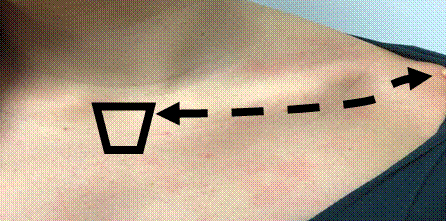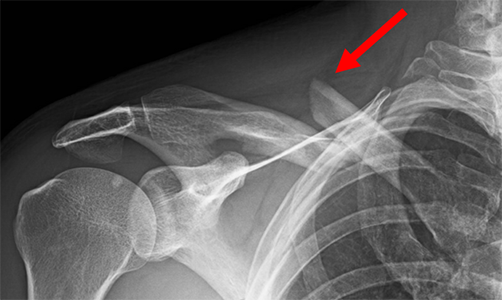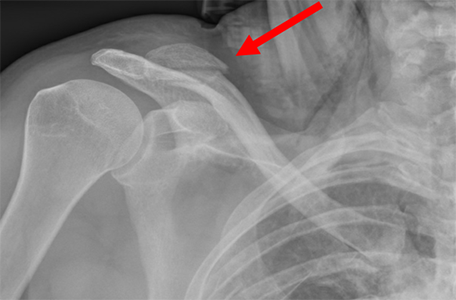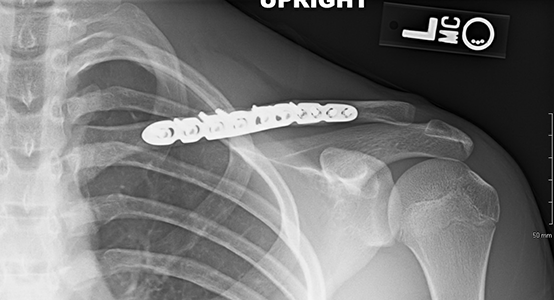Physical Therapy Videos - Shoulder
What Is It?
The collarbone, or clavicle, is an S-shaped bone that connects your shoulder blade to your breastbone. It links your upper arm bone to the rest of your skeleton. The collarbone has very little muscle or soft tissue around it, which is why you can feel it easily under your skin.
How It Happens
The collarbone is a bone that is common to break. It can be hurt easily because there isn't much muscle or soft tissue around it. Common causes of broken collarbones are direct hits or falls. The break can happen near the shoulder, the breastbone, or in the middle of the bone (most common).
First Steps
Broken collarbones usually hurt a lot, and moving your arm can be painful. You might see or feel a bump where the bone is broken, and sometimes your shoulder may look lower than the other side. A doctor will look at your shoulder and arm and take an x-ray if they think it's broken. If the bone isn't too out of place and didn't break through the skin, you might be treated with a sling and limited weight lifting. You should see a bone doctor or your regular doctor for a follow-up. People usually don't need to stay in the hospital for a broken collarbone.
Treatment
Most broken collarbones can be treated without surgery. The healing process takes about three to four months. If surgery isn't needed, you might have to limit movement and lifting for a while. Some broken collarbones need surgery. You can talk to a bone doctor about your injury and the pros and cons of surgical versus non-surgical treatment. Surgery is needed if the bone came through your skin or is close to breaking through. During surgery, a cut is made over the collarbone, the bones are put back in place, and metal plates and screws are used to hold them together.
Recovery
While your broken collarbone is healing, you might not be able to lift heavy things or move your shoulder fully. This can be due to pain or your doctor's instructions. Sometimes physical therapy is used to help with movement and lifting after surgery. It may be more comfortable to sleep sitting up after a broken collarbone. You might also use a sling for comfort. It's important to take off the sling several times a day and move your elbow, wrist, and hand (and shoulder if possible) to prevent stiffness. Moving your shoulder and lifting will get easier as your bone heals. Make sure to follow your doctor's instructions for the best results.
Long Term
Long-term issues after a broken collarbone can include a bump or a shoulder that looks lower than the other side. The bump might get smaller over time, but it might always look or feel different. Your shoulder might feel more tired or stiff than before the injury. If you had surgery, you might feel numbness near the scar on your chest. The metal plate and screws might be felt under your skin, which can make wearing backpacks, shirts, or bras uncomfortable. If they bother you, the plate and screws can be removed after the bone heals. Sometimes, the bone doesn't heal, or there's a problem like an infection. In these cases, more surgery might be needed. If you still have trouble with your collarbone, talk to your doctor about whether surgery might help.
Physical Therapy Videos - Shoulder
More Information
---
Christopher Domes, MD
Edited by the OTA Patient Education Committee and Steven Papp, MD (section lead)
All x-rays and pictures taken from the personal collection of Dr. Domes








